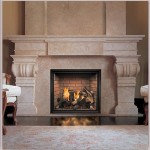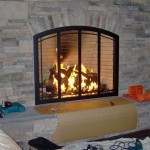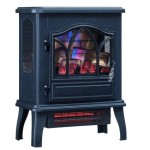Antique Victorian Pierced Brass Fan Fireplace Screen: A Study in Craftsmanship
The Antique Victorian Pierced Brass Fan Fireplace Screen stands as a testament to the artistry and aesthetic sensibilities of the Victorian era. These screens, more than mere utilitarian objects, were crafted as decorative focal points, reflecting the opulence and attention to detail that characterized the period. Examining one today offers a glimpse into the values and design trends of 19th-century homes, specifically the importance placed on the fireplace as a central gathering space and a symbol of domestic comfort. The construction, materials, and design motifs employed in these screens speak volumes about the skill of the artisans who created them and the discerning tastes of the families who owned them.
Pierced brass fireplace screens, as their name suggests, are typically constructed from sheets of brass that have been meticulously cut, etched, or punched with intricate designs. The "fan" shape, a popular variation, adds an element of elegance and visual interest. These screens served multiple purposes. Primarily, they functioned as a barrier to prevent sparks and embers from escaping the fireplace and potentially causing damage or fire hazards. Secondly, they offered a measure of temperature control, diffusing the intense heat radiating from the flames. And finally, and perhaps most importantly, they served as a decorative element, enhancing the visual appeal of the fireplace area.
The Significance of Brass as a Material
The choice of brass as the primary material for these screens was not arbitrary. Brass, an alloy of copper and zinc, possesses several qualities that made it ideally suited for fireplace accoutrements. Its inherent durability allowed it to withstand the high temperatures associated with open fires without warping or degrading significantly. Brass is also resistant to corrosion, ensuring that the screen would maintain its beauty and structural integrity over time. Furthermore, the warm, golden hue of brass was considered aesthetically pleasing, complementing the flickering light of the fire and adding a touch of luxury to the room. The malleability of brass also allowed artisans to create intricate designs, further enhancing its decorative potential.
The piercing technique, a hallmark of these screens, involved removing sections of the brass sheet to create openwork patterns. This was typically achieved through a combination of hand-operated tools and, in some cases, rudimentary machinery. The designs themselves were often inspired by natural motifs, such as flowers, leaves, vines, and birds. Geometric patterns were also common, reflecting the Victorian penchant for symmetry and order. The level of detail and craftsmanship varied depending on the skill of the artisan and the intended market. High-end screens featured incredibly intricate designs, often incorporating multiple layers of pierced brass to create a sense of depth and dimension.
The piercing process was not merely about creating holes; it was about strategically removing material to create patterns that would interact with the light of the fire. When illuminated, the pierced designs would cast dynamic shadows onto the surrounding surfaces, adding another layer of visual interest to the fireplace area. This interplay of light and shadow was a key element of the overall aesthetic appeal of these screens.
Common Design Motifs and Victorian Symbolism
Victorian design was often laden with symbolism, and fireplace screens were no exception. Common motifs, such as roses, lilies, and ferns, carried specific meanings that would have been readily understood by Victorian homeowners. Roses, for example, symbolized love and beauty, while lilies represented purity and innocence. Ferns were often associated with sincerity and fascination. The inclusion of these symbolic elements reflected the Victorian desire to imbue everyday objects with deeper meaning and to create a home environment that was both beautiful and morally uplifting.
The fan shape itself was also significant. Fans were fashionable accessories during the Victorian era, and their association with elegance and sophistication likely contributed to their popularity as a design element in fireplace screens. The radiating lines of the fan echoed the warmth and light emanating from the fire, creating a harmonious and visually appealing composition. The shape also maximized the area covered by the screen, providing optimal protection from sparks and embers.
Beyond naturalistic and geometric patterns, some screens incorporated heraldic symbols or family crests, further personalizing the object and reflecting the social status of the owners. These bespoke elements added a layer of exclusivity and transformed the screen into a unique expression of family identity. The presence of such details underscores the importance that Victorian families placed on maintaining and displaying their lineage and social standing.
Identifying and Assessing Antique Victorian Pierced Brass Fan Fireplace Screens
When examining an Antique Victorian Pierced Brass Fan Fireplace Screen, several factors can help determine its authenticity and assess its condition. The quality of the brass itself is a key indicator. Authentic Victorian screens typically used a higher grade of brass, which is characterized by a rich, golden color and a smooth, even surface. The presence of any significant corrosion or pitting can detract from the aesthetic appeal and potentially weaken the structural integrity of the screen.
The craftsmanship of the piercing is another important consideration. Authentic screens exhibit a high level of detail and precision in the execution of the designs. Look for clean, sharp edges and consistent spacing between the pierced elements. The presence of any rough edges or uneven cuts may indicate poor workmanship or later alterations.
The overall condition of the screen should also be carefully assessed. Minor dents and scratches are to be expected in an antique object, but significant damage, such as broken or missing pieces, can significantly reduce its value. It is also important to check the stability of the screen and ensure that it stands upright without wobbling. Any repairs or restorations should be noted, as they can affect the originality and value of the piece. The presence of original patina is often desirable, as it provides a sense of age and authenticity. However, some collectors prefer to have their screens professionally cleaned and polished to restore their original luster.
These screens represent more than just functional objects; they are tangible links to the past, offering insights into the design sensibilities, social values, and craftsmanship of the Victorian era. Their enduring beauty and historical significance continue to captivate collectors and homeowners alike, ensuring their continued relevance in the world of antique furnishings.

Lot Victorian Style Brass Folding Fan Fireplace Screen

French Brass 42 Figural Pierced Folding Fan Fireplace Screen Circa 1820

Antique 1920s Cameo Victorian Brass Peacock Fireplace Folding Fan Screen

Vtg Cameo Pierced Brass Fireplace Screen Peacock Fan Ornate Art Deco Lg 37 5x26

Victorian Brass Peacock Fireplace Screen At 1stdibs Vintage Cover

Vintage Cameo Pierced Brass Fireplace Screen Peacock Style

Antique Victorian Cameo Brass Peacock Fireplace Fan Folding Screen For At 1stdibs Vintage

19th Century Fireplace Screen In Gilt Broe For At 1stdibs

Italian Gilt Brass Pierced Folding Peacock Fan Fireplace Screen Or Fire For At Pamono

High Quality Antique 19th Century Gilt Broe Brass Victorian Fire Screen Fan
Related Posts








